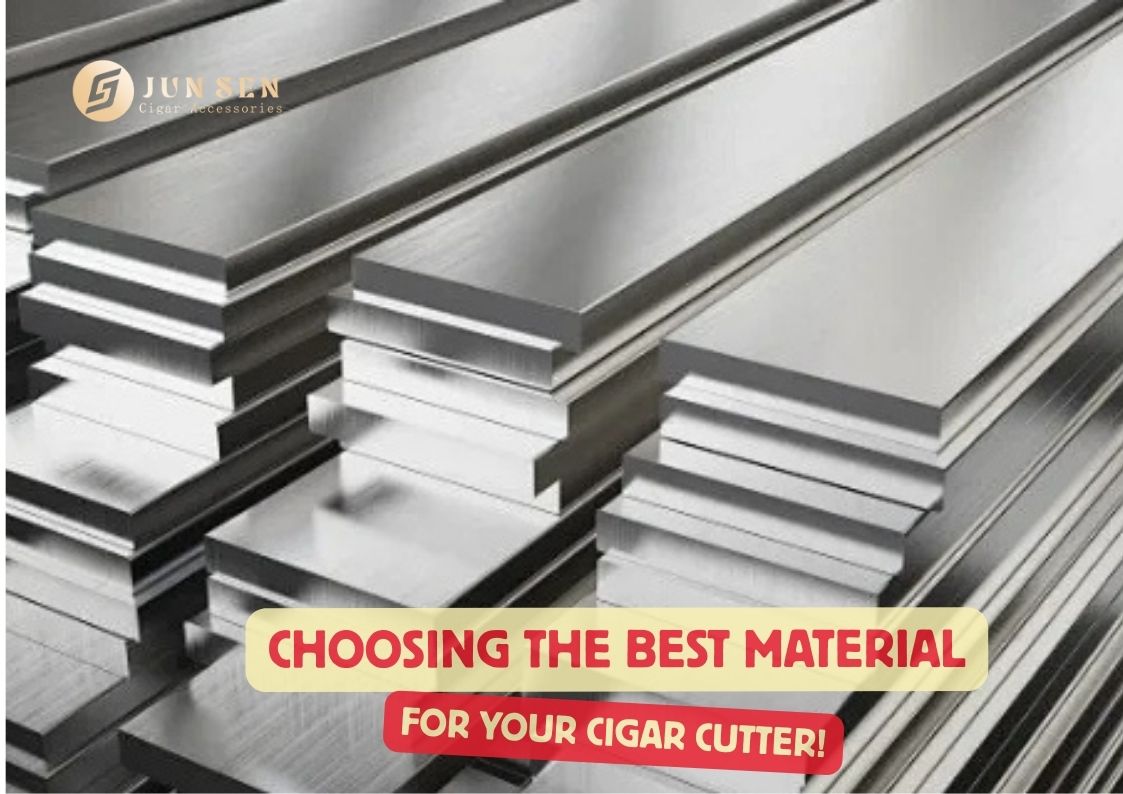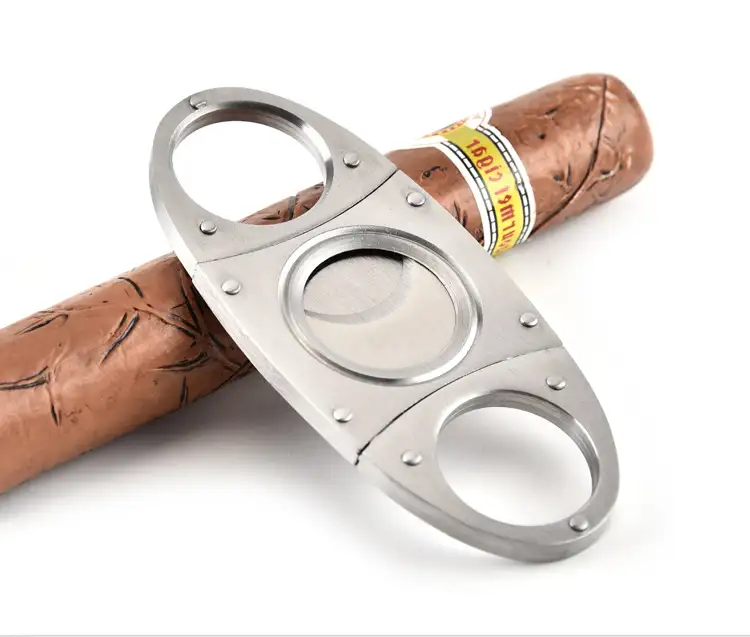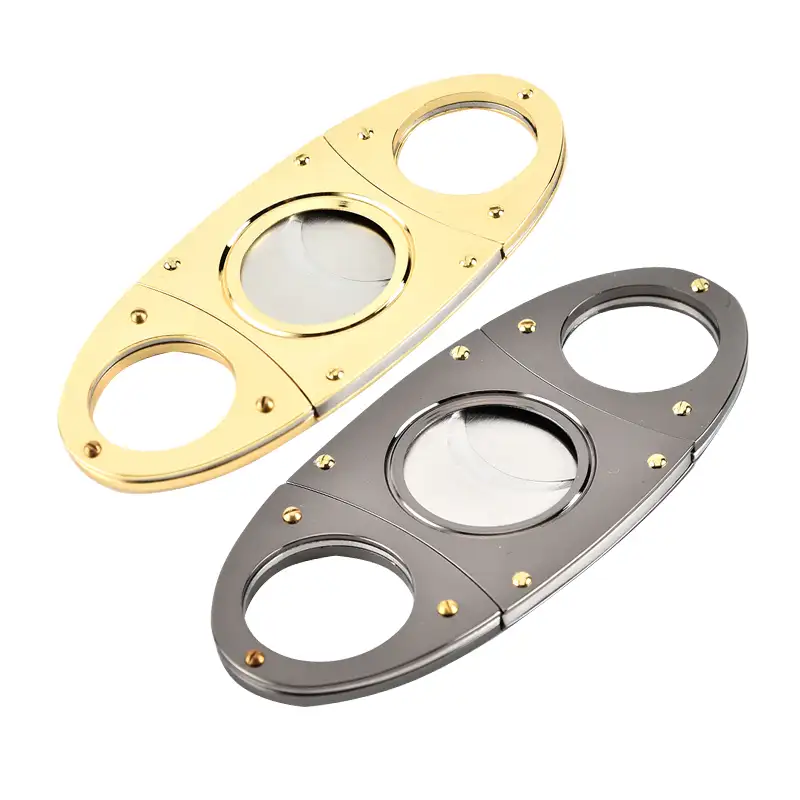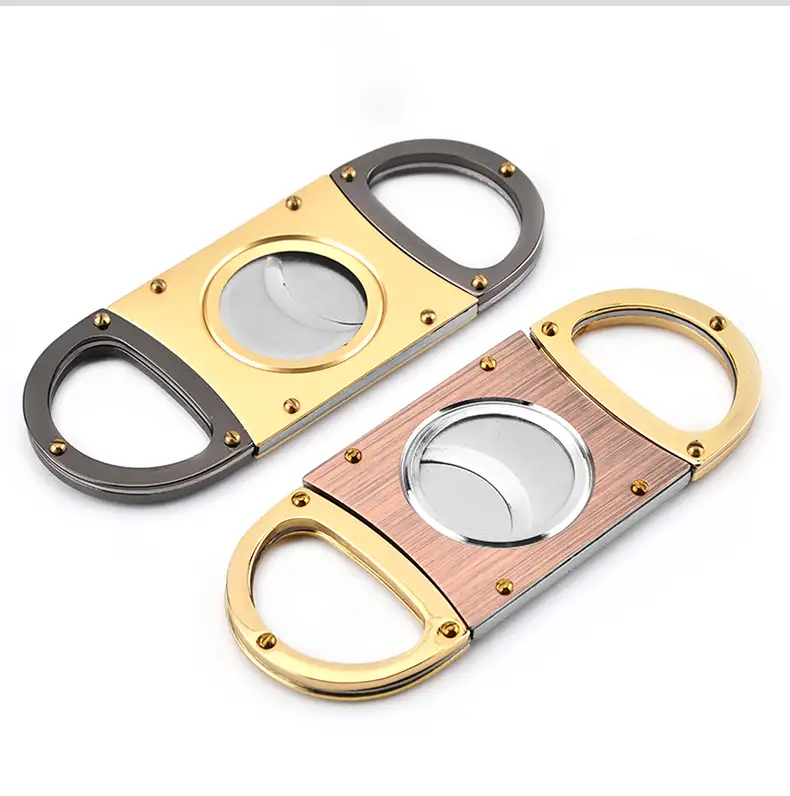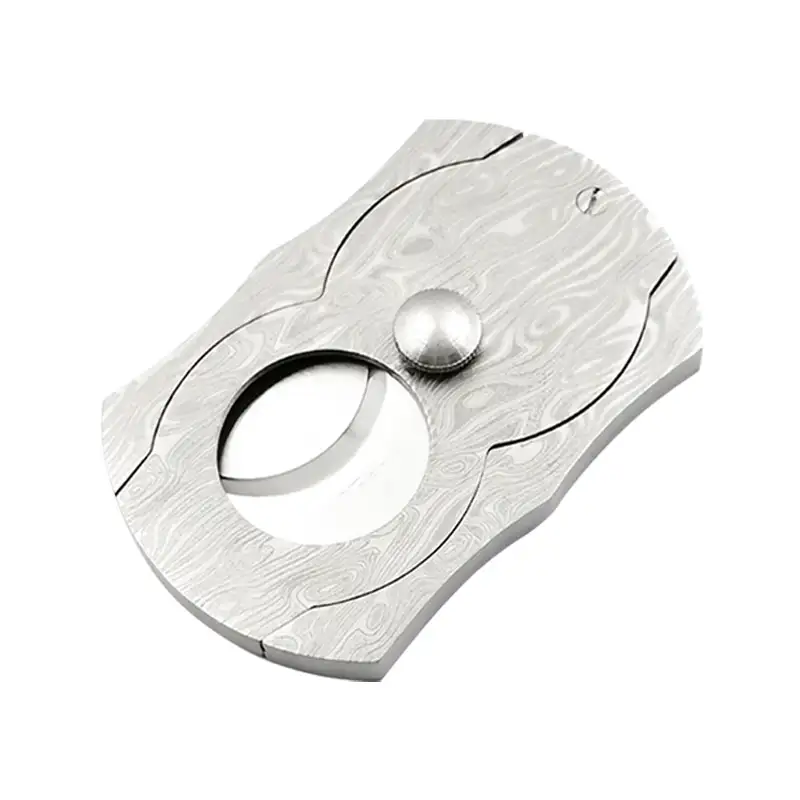Blog
Precision Meets Tradition: How Material Choices Define the Future of Cigar Cutters
Precision Meets Tradition: How Material Choices Define the Future of Cigar Cutters
The elegance of cigar culture is inseparable from the precision of its tools. A cigar cutter is not merely an accessory but a technological instrument that determines airflow, combustion, and the preservation of tobacco’s integrity. The science of manufacturing cigar cutters begins with one critical choice: materials. From stainless steels like 420 and 420J2 to zinc alloys, carbon steels, and advanced composites, every material shapes the blade’s sharpness, durability, and long-term reliability. This article examines the engineering logic and consumer value behind these materials, exploring how they influence precision cutting, edge retention, and blade flexibility.
The Engineering of Precision Cutting
Why Cutting Matters
Unlike a kitchen knife slicing through uniform fibers, cigar cutting is a micro-engineering process. The blade must remove the cigar cap cleanly at the seam line, ensuring that airflow remains balanced while preventing the wrapper from unraveling. A poorly cut cigar disrupts draw resistance, alters combustion, and diminishes the smoking experience.
Cutting Mechanics in Detail
-
Shear Resistance: The hardness of a blade defines how easily it can penetrate compressed tobacco.
-
Edge Retention: Material composition ensures repeated use without significant dulling.
-
Friction Control: Smooth finishes reduce drag, producing a clean, effortless incision.
According to the Cigar Journal (source), a clean cut directly correlates with burn consistency, making the cutter as important as the cigar itself.
Argument 1: Stainless Steel 420 & 420J2 as the Industry Benchmark
420 stainless steel is the backbone of professional cigar cutter blades. Its high carbon content allows for optimal hardness and sharpness. Unlike softer steels, 420 is less prone to edge deformation, ensuring performance over hundreds of cuts.
420J2, slightly softer but with superior corrosion resistance, is often chosen for supporting components. In manufacturing, combining these two creates a balance between edge precision and material toughness.
Evidence: The ASM International database (source) notes that 420 stainless steels are widely used in surgical instruments, proving their reliability in high-precision applications.
Argument 2: Zinc Alloy for Stability and Aesthetic Appeal
While the blade defines sharpness, the body defines ergonomics and design identity. Zinc alloy is favored for its casting flexibility, enabling luxury surface treatments such as electroplating and brushed finishes.
-
Weight Advantage: Heavier structure offers balance during cutting.
-
Design Versatility: Supports intricate branding and custom finishes.
-
Market Positioning: Creates a premium look without escalating production costs.
For consumers, a zinc alloy body paired with stainless blades delivers both performance and luxury appeal.
Argument 3: Carbon Steel for Extreme Sharpness
Carbon steel blades achieve razor-like sharpness unmatched by many alloys. Enthusiasts often prefer them for ceremonial or high-end cutters. However, carbon steel requires protective coatings or routine maintenance due to oxidation risks.
Evidence: Metallurgical studies from ScienceDirect (source) highlight carbon steel’s high hardness but susceptibility to corrosion — making it ideal for niche, premium tools but less practical for humid storage environments like cigar lounges.
Argument 4: Composite and Hybrid Designs for Modern Lifestyles
Today’s cigar culture extends beyond lounges into travel, outdoor experiences, and social events. Hybrid cutters integrate polymer bodies with steel blades, reducing weight while maintaining functionality.
-
Portability: Lightweight designs suit frequent travelers.
-
Durability: Shock-resistant polymers protect against accidental drops.
-
Innovation: Opens opportunities for eco-friendly and recyclable materials.
Hybrid cutters reflect how consumer demands are shifting toward both performance and sustainability.
Argument 5: Edge Retention and Long-Term Value
A cutter’s blade life is a measure of both material quality and manufacturing precision. For instance, 420 stainless steel blades, when properly heat-treated, can outperform softer alloys by retaining sharpness even under repeated stress.
-
Manufacturer’s Value: Fewer returns, higher reputation.
-
Consumer’s Value: Longer usability reduces replacement frequency.
Evidence: Data from Knife Steel Nerds (source) confirms that heat-treated 420 stainless steel can achieve hardness levels of 50–56 HRC, sufficient for precision tools like cigar cutters.
Argument 6: Blade Flexibility and User Safety
Flexibility in a cutter blade prevents snapping under uneven force. This is particularly important in guillotine and V-cut designs, where blades must adapt to different cigar ring gauges.
420J2 provides slightly more ductility than 420, reducing breakage risk while supporting structural resilience. This balance of hardness and flexibility makes it a material of choice for safety-conscious manufacturers.
Argument 7: Manufacturing as a Branding Strategy
Beyond performance, material choices shape brand identity. For example:
-
Premium brands highlight 420 stainless blades with polished zinc alloy frames.
-
Travel-friendly brands emphasize hybrid composites.
-
Luxury segments may feature carbon steel with artisanal finishes.
In a competitive market, materials are marketing tools, signaling quality, durability, and exclusivity.
Conclusion
The evolution of cigar cutters reflects the fusion of engineering precision, material science, and consumer culture. From 420 stainless steel’s balance of hardness and corrosion resistance, to zinc alloy’s aesthetic versatility, to carbon steel’s unrivaled sharpness, material choice defines the cutter’s value. Emerging hybrid and composite designs show how innovation continues to reshape the industry.
For manufacturers, the message is clear: invest in material excellence as a foundation of brand reputation. For consumers, selecting the right cutter is not just about sharpness but about experience, longevity, and cultural refinement. In cigar enjoyment, as in engineering, precision is everything.
cigar accessories, cigar tools,
cigar scissors,cigar accessory
CATEGORIES
LATEST BLOGS
CONTACT US
Contact: Silvia Cheang
Phone: +8615819137975
E-mail: [email protected]
Add: No. 39,First Rd, Zhongzhou Industrial Zone, Jiangcheng District, Yangjiang, Guangdong, China

